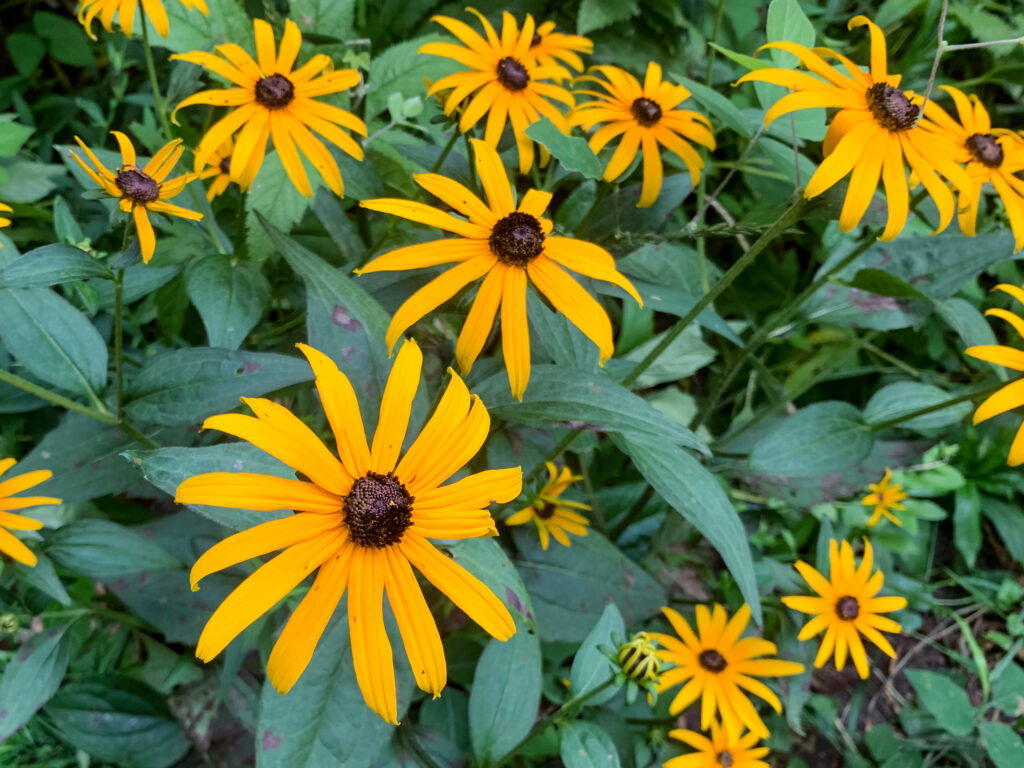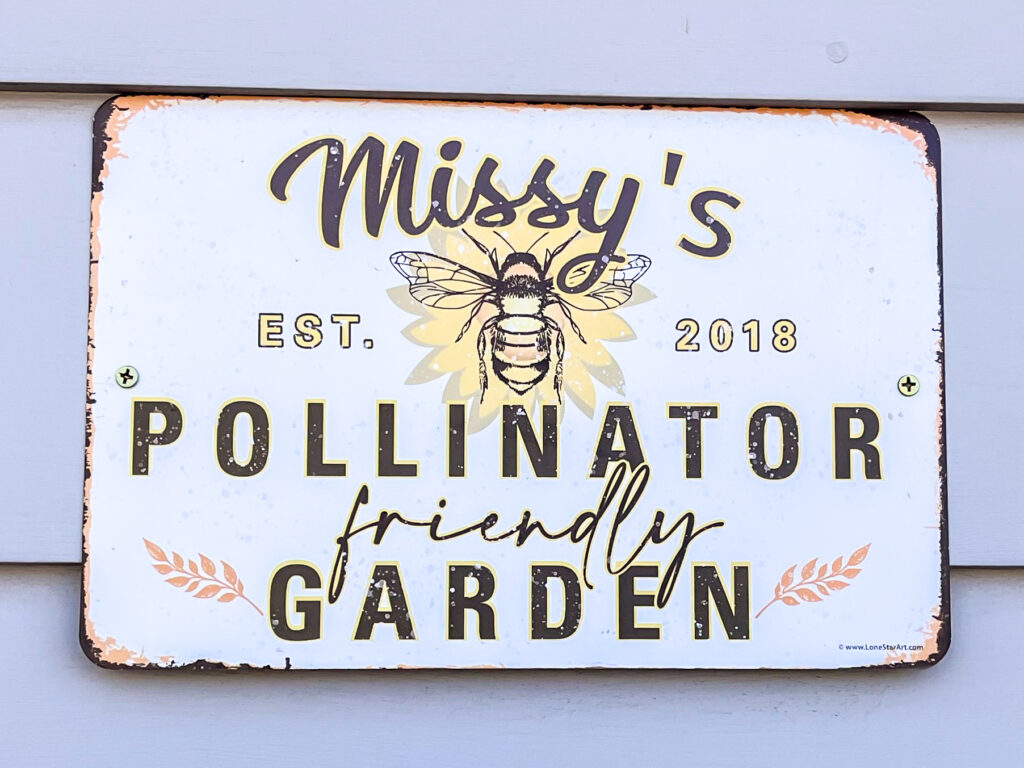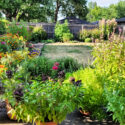Douglas Tallamy has two points he wants to make. The first: It’s not too late to save the plants and animals of our ecosystem. The second: We can do that by restoring native plants in our landscapes. The good news? It’s relatively easy. The bad? The natural landscape is at stake if we don’t.
“Unless we restore native plants to our suburban ecosystems, the future of biodiversity in the United States is dim,” Tallamy writes in his book, Bringing Nature Home.
So, no pressure.
Native To Me
Native plants come in all shapes and sizes, but telling the difference is crucial to restoring the natural landscape of an area. A non-native plant may be pretty, but if it’s killing a native species, it’s got to go.
Julie Perreault, a volunteer coordinator at Polk County Conservation in Iowa, defines native plants as those that have “historically grown and evolved within this particular landscape.”
In contrast, a non-native plant, or invasive species, would be anything that originated somewhere else. In the Midwest, that would be plant species like Baby’s Breath and Garlic Mustard, among plenty of others.
One in every three bites of food that we eat depends on a pollinator.
Julie Perreault
In his book, Tallamy explains how native species help maintain biodiversity, and how if those species are gone, ecosystems — and human survival — are at risk of collapse. The reason: Biodiversity helps create an efficient ecosystem and protects insects, wildlife and, in particular, pollinators, from alien invaders. To put it simply, native plants support insects, wildlife, food and everything else that helps our ecosystems survive.
“Really for us as humans, one in every three bites of food that we eat depends on a pollinator,” Perreault said. “If we want to continue having food we can eat and seeing the animals that we like to see, we have to be planting for them.”
Homegrown National Park
Part of Tallamy’s efforts to increase biodiversity is through the Homegrown National Park (HNP) initiative, “a grassroots call-to-action to regenerate biodiversity and ecosystem function by planting native plants and creating new ecological networks.” HNP provides the public with videos, articles, photos and graphics as resources for information on native plants.
Tallamy also hosts webinars and other events to promote his message about the importance of native plants. HNP users can even register their own yards on a map that tracks native plantings in the United States. Currently, there are 28,086 active plantings registered, covering about 78,000 acres. In Iowa alone, there are 366 plantings totaling nearly 11,000 acres.
“Almost every single environmental problem we have here is preventable,” Perreault said. “We know how to fix it. We know how to stop soil erosion. We have management practices. We know the benefits of using native plants.”
Backyard Gardeners
Missy Johansen and Mara Egherman are two Des Moines, Iowa, residents who have been planting native plants in their yards for the last few years. They each have close to 100 native species planted in their yards. And both, of course, have their yards registered with HNP.
Initially, Johansen wanted to see more butterflies, so she planted milkweed which brought monarch caterpillars to her yard immediately. She quickly learned she needed more nectar plants to sustain the monarchs and added that to the landscape as well.
“I started planting more things, which then brought all the other insects to the yard,” she said. “And then I started getting excited about bees and then I started getting excited about everything. And then I got excited about native plants.”
Egherman knows others who have been doing native planting since the 1980s. When she learned that native plants would clean the air, clean the soil and clean the water, she began planting in her own yard.
“They make me happy,” Egherman said. “I sit here a lot in the summer. Watching the butterflies and the birds is really good for my mental health. And digging in the soil brings me a lot of satisfaction.”

Positive Side Effects
Johansen has noticed a lot of changes in her personal life as her native plant garden has expanded. She’s developed a greater appreciation of the environment around her and has even started to take on more sustainable practices at home like composting.
“I have 11 rain barrels because I plant a ton of pots. Rather than wasting water, I can use the rainwater,” she said. “I just look at things a bit differently, and I see the world as bigger than myself.”
Both Johansen and Egherman have also found that gardening has benefits for their families. When Egherman’s kids were younger, working in the garden was an easy and cheap bonding activity. Now that all the kids are older, both Johansen and Egherman still teach their kids about native plants through their own planting process. Johansen’s kids are so supportive they even bought her a sign for her garden.

The more species Egherman learns about, the more she falls in love with them. She will never look at a roadside the same again. Just while driving, she can identify restoration projects, native and non-native plants.
“And that’s fun, but it’s also sad when you realize how much invasive stuff was just all over and that we’ve caused that,” Egherman said.
In The Know
The best part about this method of native plant restoration is that anyone can do it. Finding the right native plants for your own yard can be overwhelming and confusing, but Homegrown National Park provides native plant lists and databases based on zip code or region that can help.
Iowa is known for having native plants such as butterfly milkweed, purple prairie clover, black-eyed Susan, little bluestem and cardinal flower. Invasive species to Iowa include honeysuckle, buckthorn and various turf grasses like Kentucky bluegrass or perennial
ryegrass.
Most American lawns are covered in turf grass — a monoculture, or a single crop species growing in one space. This requires pesticides and herbicides to maintain a “manicured look.” But turf grass does nothing for wildlife or the ecosystem. In fact, turf grass is often dangerous to other plants like trees because their roots are in direct competition with tree roots.
“I don’t put anything in the ground that I haven’t completely researched,” Johansen said. “I don’t put anything in the ground that doesn’t have a purpose ecologically either for the environment, for insects, for wildlife or for birds.”
When deciding where to get the plants for a garden, it’s best to purchase them as locally as possible.
“You want your seed source to be acclimated to your climate. So the closer to home, the better,” Johansen said.
Both Johansen and Egherman usually get their plants from different nurseries across the Midwest like Blooming Prairie Nursery in Iowa, Prairie Moon Nursery in Minnesota, Prairie Nursery in Wisconsin and Prairie Legacy in Nebraska. They will often trade plants with friends if they know that the plant is native and growing successfully.
Johansen stays away from “big box” stores like The Home Depot or Lowe’s Home Improvement when purchasing plants because they don’t typically sell true natives. What they sell are often cultivars, which are plants that have been bred for certain traits like color or stem length. Cultivars have often lost their ecological benefits like the pollen, nectar or good root structures, Perreault said.
“And the funny thing is, out of all those plants, I never, ever, ever see pollinators on them,” Johansen said. “So as soon as I am settled and have my empty spaces filled in, then those plants will get replaced because they’re really not providing any service to the ecosystems.”
Keeping It Local
There are several local businesses that provide services to help homeowners create their own native gardens in their backyards. In Des Moines, Manscapes Lawn Care and Lewis Lawn and Garden have been doing this work for years, with both businesses picking up during the pandemic.
Leah Ackerman co-operates Manscapes Lawn Care with her partner Grant Bridgford. Manscapes specializes in Iowa native plants, erosion control, water runoff and chemical-free practices. Manscapes often provides consultations to clients about what to plant, where and how to go about it. They may even create a full design and implement it on the property as well.
“I have a lot of concerns about water quality, especially in the Des Moines area,” Ackerman said. “But this is a way to try and attempt to restore what we can, while we still can.”
Lewis Lawn and Garden is a Black-owned small business owned by another Des Moines native, Justyn Lewis. Over the last few years, Lewis Lawn and Garden have evolved in different areas with the most recent launch in 2020 specializing in environmentalism. Currently, they do soil restorations, native plantings, rain gardens and tiling to address water runoff.
“I saw the potential in the space to grow and really make Des Moines and the surrounding area a better place,” Lewis said. “I love creating systems and processes and infrastructure and doing right by people. That’s what drives me.”
Putting on the Gloves
If you’re starting out your own native garden, there are a few things to consider so the process doesn’t seem so overwhelming. The most important piece of advice: start small and expand from there.
“Do a phased approach. Maybe it’s like every year you’re adding a layer to an existing garden that you have,” Perreault said. “Pollinators can travel a lot, which means little pocket gardens make a difference. Even a 10-square-foot garden is going to be beneficial.”
If your goal is to promote the local ecosystem, the first thing to do is get rid of invasive species and replace them with natives. Decide on the area to begin and remove any invasive species or turf grass by pulling them from the ground or smothering the grass with cardboard to kill it. Then, investigate good plant options for your field conditions, plant a base layer and expand the height by planting tall grasses. Once native plants are planted, they become pretty self-sustaining, just like they do in nature.
“You never wanna force people into a box and make them something that they’re not. The same is true with any plants that you try to garden with,” Perreault said. “Get to know the plants and utilize them for their benefits. You really just need to get in there and work with them.”
Perreault suggests visiting one of Polk County’s parks like Jester Park or Easter Lake to get to know the plants in the wild. Or, join Polk County Conservation for a volunteer event to get great outdoor, hands-on learning sessions while helping to plant and maintain their parks.
“I feel like I’m being a good steward of the land,” Johansen said. “I’m giving back.”


One thought on “The Growing Importance of Native Plants”